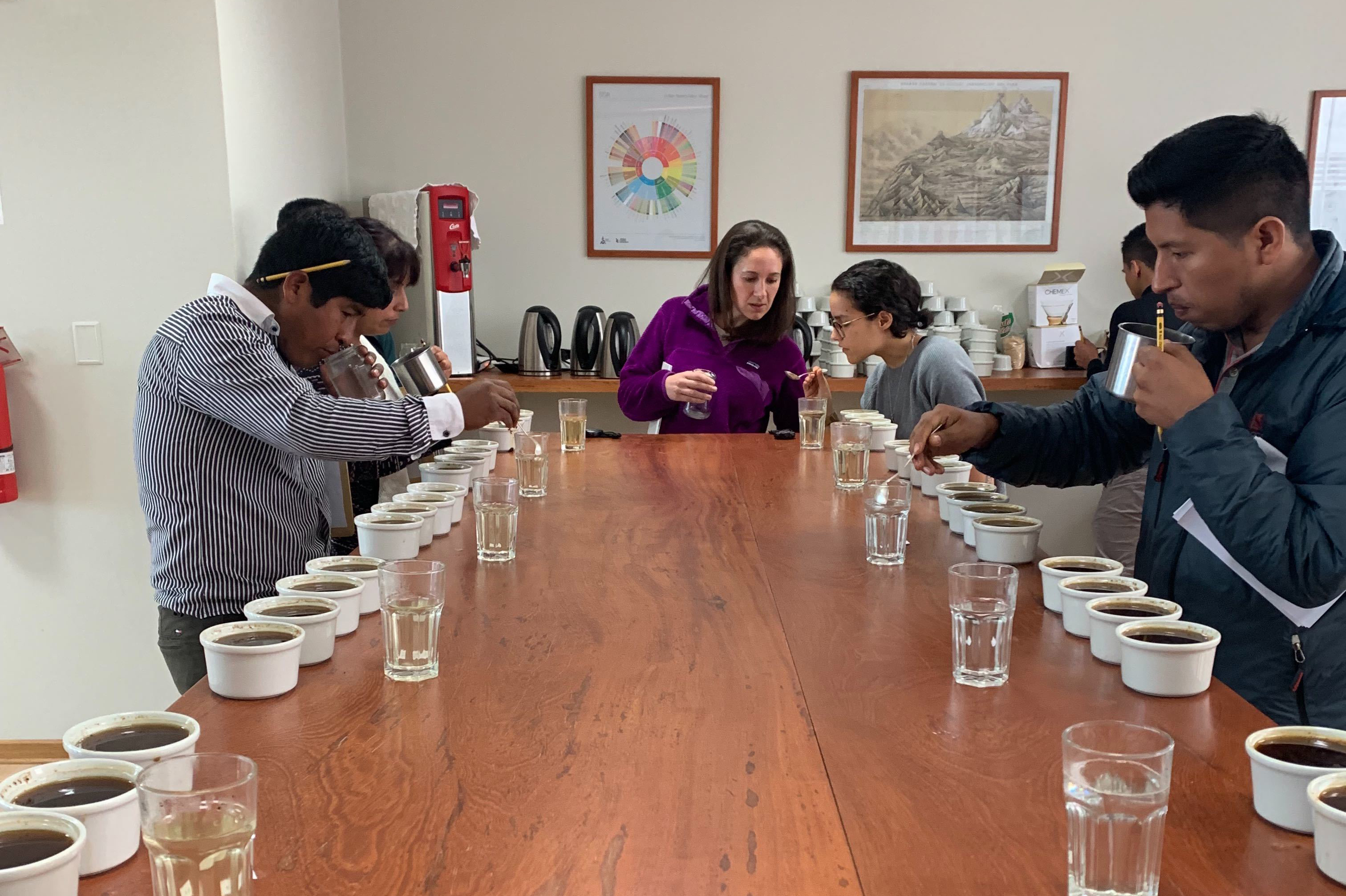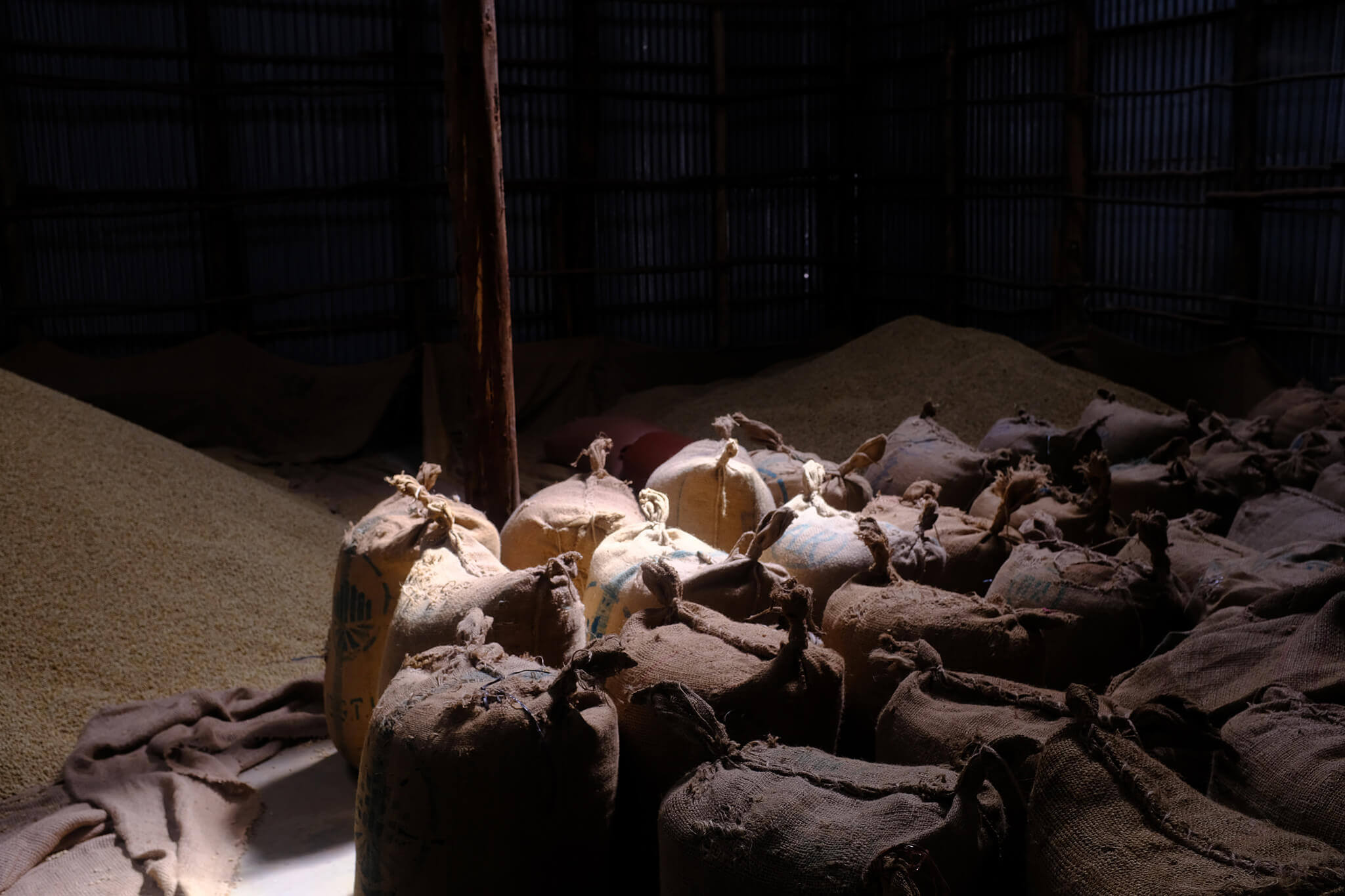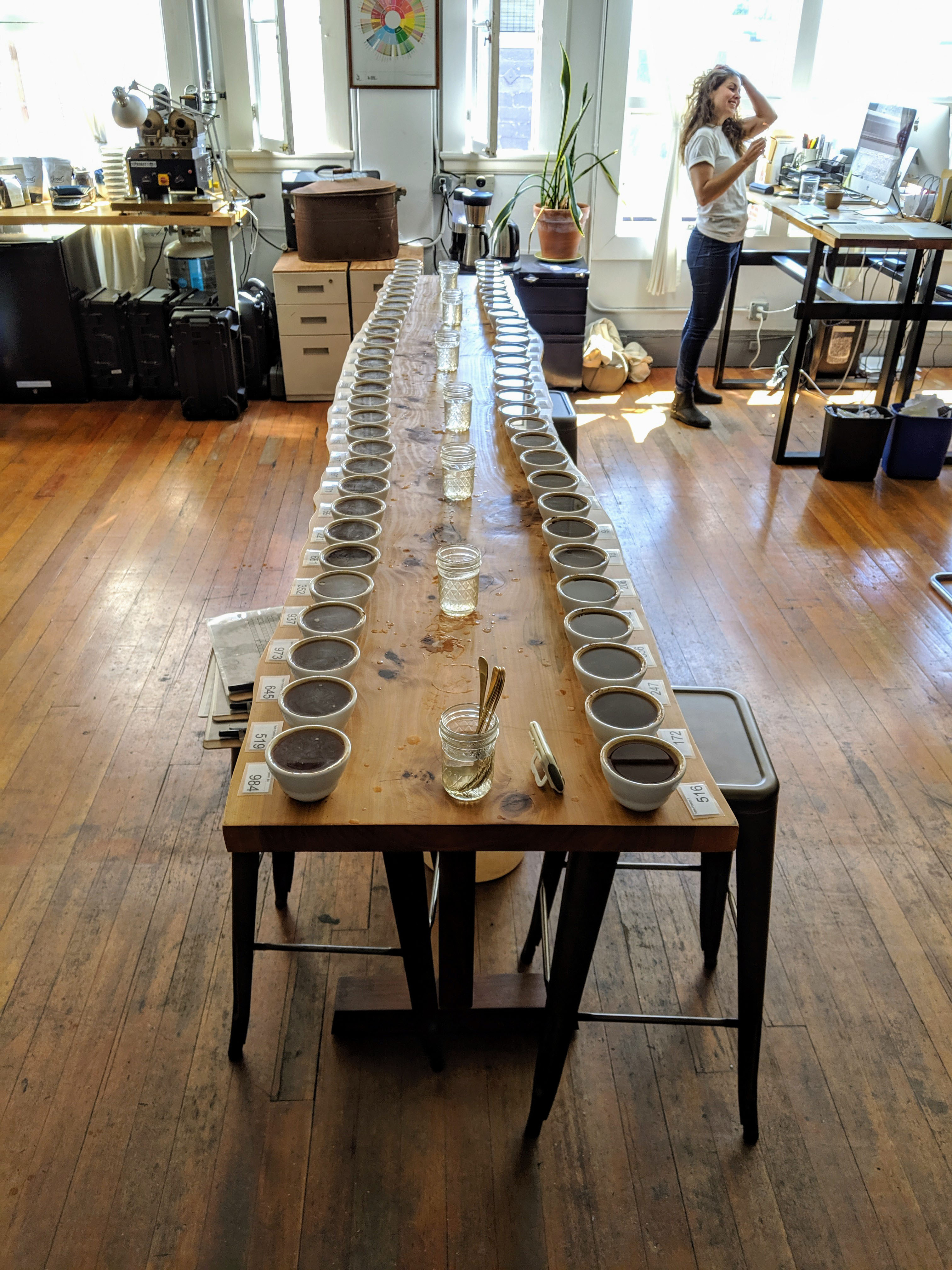Coffee is a seed, and like any other produce, it is perishable—meaning that even the very best, most shelf-stable coffees on the planet will eventually show their age. Coffee shelf-lives vary region to region, coffee to coffee, and year to year based on myriad factors, some known, some suspected yet unconfirmed, and likely some not yet discovered.
Age is something that we at Red Fox track closely. All coffees age, and we can learn a lot about the process: how it progresses as well as its various causes. By testing the physical attributes of coffees (in our case, moisture and water activity) and tasting them at tight intervals, we try to learn as much as possible about what gives coffees the longest possible shelf-life and what the often subtle and gradual process of aging can teach us about coffee processing.
What Age Tastes Like
Once coffee is harvested, it goes through constant, if subtle, change even in its green form. Typically, coffees that are processed meticulously tend to open up and improve for a certain amount of time off harvest (a few months in most origins, but sometimes much longer). After that, they tend to stay relatively static for a period, then begin to lose some of their highlights, their subtler flavors like flowers and fruit. From there, they continue to round out, and as more nuances of flavor pass out of the seeds, notes of paper and cardboard start to creep in. Eventually, those flavors become predominant and the coffee loses most or all of its original character.
You might also hear this profile referred to as “faded” (because most of the original character has faded from the beans), “woody” or “papery” (because the coffees taste like wood or paper), or “baggy” (because the flavors taste very similar to the jute bags coffee is packed into, originally thought to cause these flavors).

Our QC Check-in Process
At Red Fox, we use a carefully calibrated set of procedures to track each coffee’s aging process from the time we decide to purchase it until it passes completely from our hands.
Prior to roasting and cupping, we take moisture and water activity readings on each sample that enters our lab and collect them in our sample database, which also stores roast metrics and cupping notes. Using controlled roasting and cupping processes, we cup coffees as offerings in order to make purchasing decisions, as preships to ensure quality prior to shipment, and as arrivals once the coffees enter the warehouse. Then, every 30 days after arrival, we retest moisture and water activity, roast the coffees, and cup them again, taking note of changes over time.
Once we start to taste even a hint of age flavor in coffees, we note and measure it on a scale of 1-5. At 1, the very beginnings of age, not perceptible to many, start to show. At 3, the coffee possesses about half of its original character and half characteristics of age, like cardboard or paper. At 5, the coffee retains none of its original character, giving over completely to age flavors—although many coffees never reach this point and do continue to retain some original character elements no matter how far off harvest.
[table id=6 /]
Once we taste age in coffee, we discount the coffee to make sure that it gets sold and roasted quickly, while it retains a significant amount of its original character.

Water Activity and Age
We’ve noticed that even more than a coffee’s moisture content (the literal amount of moisture found in the seeds), water activity level seems to be an excellent indicator of how a given coffee will age over time. Water activity describes how bound the moisture is inside the coffee seed, how much it moves in and out. Unlike moisture, water activity often fluctuates dramatically over the course of a coffee’s lifespan. We’ve found that both high water activity in general but also major fluctuations in water activity—whether during milling, transit, or warehousing—tend to act as solid indicators that a coffee’s shelf life may be shorter than similar coffees whose water activity stays more stable throughout those processes.
This is difficult to track at parts of the process where we aren’t in the physical vicinity of the coffee, like shipping, so last year we started packing data loggers along with select containers to gain more insight into the conditions coffees experience during transit. We’ll have data to share on this soon, and we hope it will help us start to close the gap on the few remaining inconsistencies in our research on water activity and age. If you want to be a part of these experiments, get in touch and we can talk about getting data loggers in some of your coffee.
Past Crop v Age
Many use the term “past crop,” meaning coffee from a past year’s harvest, synonymously with age, but they are not synonyms. We’ve had coffees pass across the cupping table for over a year without showing any age—and in fact, some Ethiopian coffees start to hit their stride far after most coffees would show almost nothing but age. Unfortunately, some coffees display age characteristics at the offer level, before they’ve even left their country of origin. Most coffees sit somewhere in between, but the arrival of a new crop shouldn’t be seen as a switch that flips, rendering the older crop automatically aged.

Age is Not Death
All coffees age, and that doesn’t mean that they no longer have great flavors or a place on a well-rounded menu. While we work to understand coffees’ aging process as much as we can and to guarantee the longest shelf lives possible, coffees showing various amounts of age can still bring just as much to the table as fresh coffees.
Even the most seasoned palates have variable sensitivity to age in coffee, and many consumers not only can’t taste mild to moderate age in coffee, they actually enjoy flavors like cedar that present in coffees with significant age. While coffees showing moderate to significant age may not be the best match for light roasted products, they can still bring sweetness and character at fuller roast levels, which many consumers prefer.
Perhaps even more critical than the flavors that remain in the cup as coffees age, the value that coffees bring through the strength of their supply chains does not diminish with time. Coffees that represent an investment in a deeply-rooted, high-quality value chain still hold that value and are worth investing in.
We’ve gathered a lot of data on age in coffee over the years and will continue trying to crack its complex code, so stay tuned for more results as we continue to gain insight into coffee’s aging process.
To learn more about how we source coffee, visit our journal.
